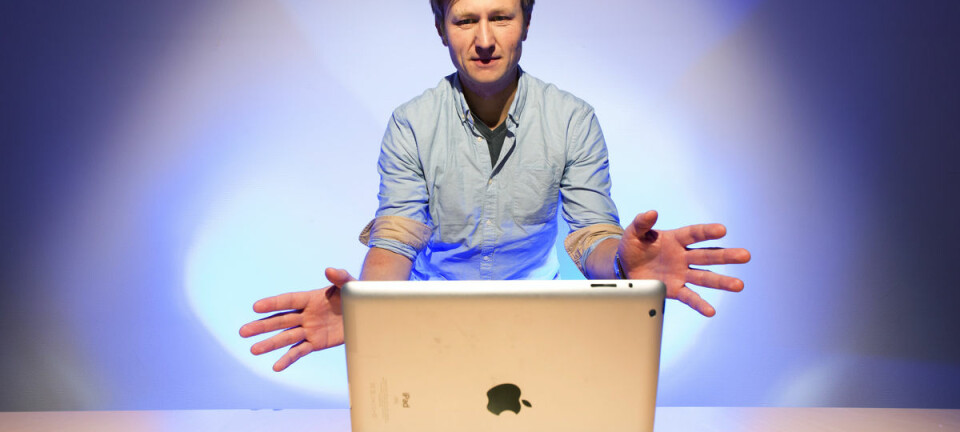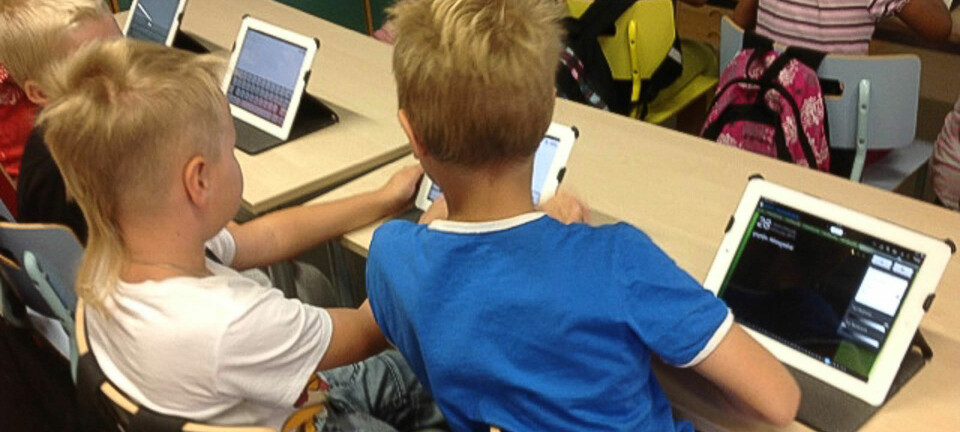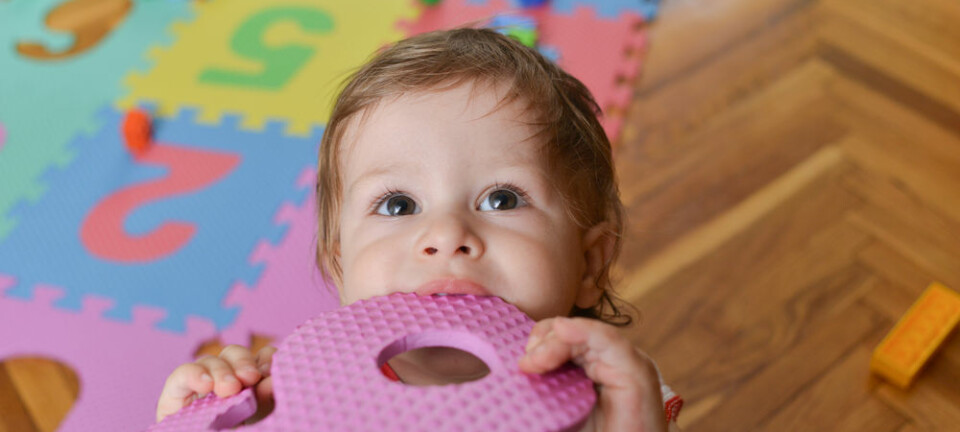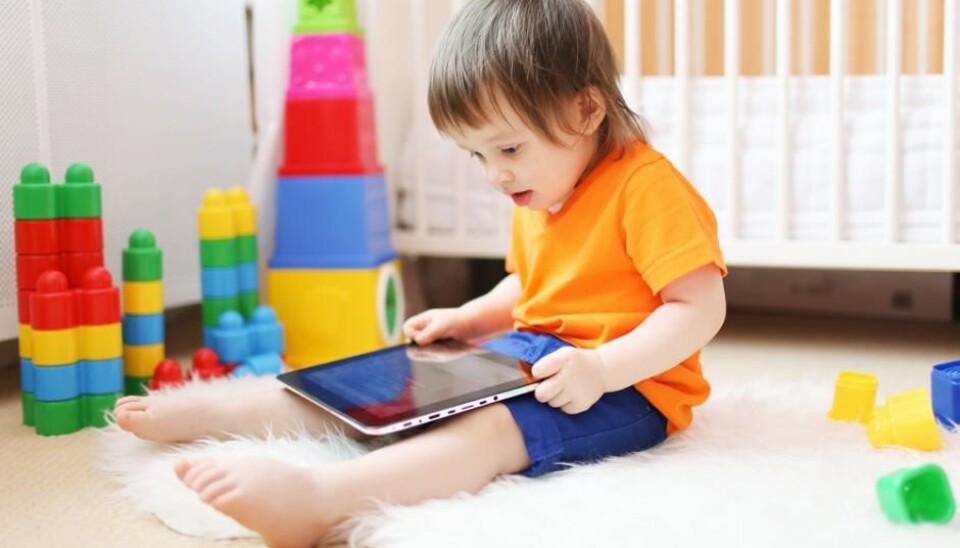
Tablets enhance play by taking toddlers on a digital adventure
Tablets do not necessarily make children passive or sedentary. In a Danish nursery, a group of scientists, educators, and education consultants have studied how digital technologies can be used to enhance playful activities.
“Children should learn more in Kindergarten”
“Children should be digitally educated”
“iPads have no place in day care”
These are some of the opinions voiced in the debate about children, day care, play, learning, and digital technology. Some researchers recommend systematic education where small children train in language and mathematics. Others favour play as a basis for developing social skills and education.
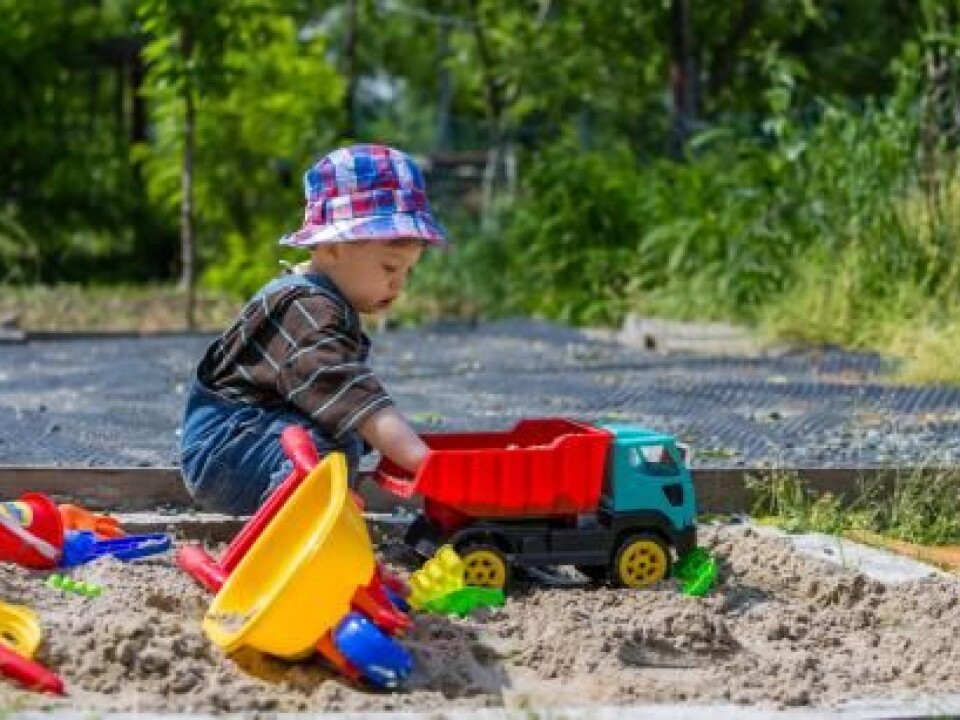
Most agree that educators should be engaged. But perhaps something is fundamentally wrong with teacher training, where digital media plays a small role, even though it has been a part of educational practices for many years.
Read More: Learning in day care - is that what we really want?
The project: “The Big Adventure”
In this article I will use concrete empirical examples to show how the introduction of new technology in day care poses new questions about how children interact and play, and what role digital technology can have, if you leave room for children--and adults--to be creative and to experiment.
The examples show how day care professionals can become multi-faceted by adopting digital technology.
The examples come from a project in The Integrated Institution Paddehatten in Vejle Municipality, Denmark. The project has been running for about a year and is a collaboration between day care teachers from Paddehatten’s day care centre, two consultants from the local municipality, and three researchers from Aarhus University and the University of Copenhagen, Denmark.
Read More: Day-care children benefit from risk in play
Some parents are against tablets in day care
The introduction of digital media in day care institutions can be seen as an opportunity for a new orientation of competency of day care professionals.
The topic is hotly debated. In some institutions parents clearly say no to the use of tablets.
They argue that children sit quietly for too long, that they get plenty of “screen time” at home, and that the tablets are addictive and generally just bad for children.
Digital technology is seen as a sedentary, formal style of learning, or worse, just a digital baby sitter.
In Paddehatten day care, the starting point is very different. It is not about playing games or solving exercises on the iPad. It is more about playful and creative processes facilitated by different types of technology.
Read More: Tablets help students write faster – but is that better?
Children play with digital butterflies
Paddehatten day care use tablets to support various types of play activities to engage and stimulate the children.
One of these games is the butterfly game, where between ten and twelve children and two to three nursery teacher go to a separate room.
Some of the children may have just woken up from their morning nap or have been changed and are offered a hand to hold or a lap to sit on. The room is dark and the only light is from a projector that shows pictures on one wall.
All the children and adults are handed a chiffon scarf, which they can wave as they sing and dance along with the women in the music video as the butterflies fly by.
The children have sung this song many times before. The older children know all the gestures, while the younger ones are a little more cautious and observe what happens.
When the song is over, the assistants take out the iPads and a small portable projector. She shows pictures from YouTube of butterflies. The pictures are projected onto the ceiling, the floor, and on one of the children’s stomachs. The children cheer and begin to run around to catch the butterflies.
They then open the door to the common room and the butterflies fly out of to the light. Up in the air and quickly along the floor.
The children hurtle off, and howl and squeal every time the butterflies go to a new place. At the end, they head to the door and out to the playground and the game is over.
It is a game, which has been played time and time again at the day care—a joint narrative that the children engage in with their whole bodies.
The game is probably impossible without the use of digital technology—the iPad and the mini-projector, together with the pictures and film from YouTube. But it is in no way sedentary or passive.
Read More: Finnish school abandons books for tablets
Shall we take the bus to Africa?
Another game that uses a tablet is the bus game. Here, the children start by finding a stool and sit themselves in rows in the common room, with a steering wheel at the front.
The children arrange themselves by observing each other and reacting to the other children’s body language and positioning.
The game is played by children between one and three, and their verbal language is not what matters—it is the body.
The teacher articulates what the children can do: “Where shall we go on the bus?” she asks. “Africa,” they agree, and so the teacher plays a film about a car running through the savannah and a village in Africa.
The film is projected on the wall in front of the bus, helping to create a common reference framework for the kids. Along the way, the teacher follows the game and extends the challenges.
When the bus is running really fast, the picture jumps up and down on the wall, and the children jump along with it.
The projection on the wall, the chairs, and especially the adult explaining what is going on throughout the game, acts as an anchor throughout the experience. Direction comes from the short film and the nursery teacher actively supporting the play narrative as it unfolds.
Read More: Controlling mobile phones and tablets with hand movements
New technology, new questions
These two examples show that tablets are much more than just sedentary childcare.
The main point of the project is that digital technologies can be included on an equal footing and with the same level of reflection as other teaching materials and technology in day care.
The research was not focussed on defined objectives or academic achievement of activities, instead we focussed on the children’s shared physical play.
We asked how we can use technology to support the cognitive content and bodily awareness of young nursery children? What can they offer to each child individually, or to the group as a whole? Which types of reflection did the day care staff use? And how does this fit with the daily teaching plan?
This also brought a different perspective to the concept of digital literacy: using digital tools does not mean using social media or possessing technical skills.
Digital technology can help children to practice forming friendships with other children, and to use play in a creative way.
--------------------
Read the Danish version of this story on Videnskab.dk
Translated by: Catherine Jex
